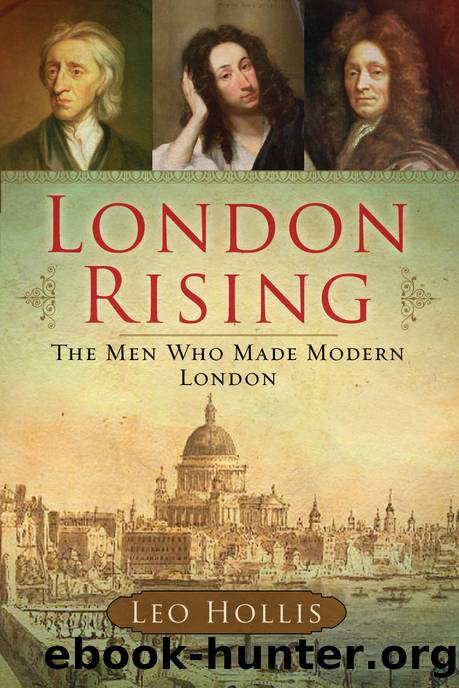London Rising by Leo Hollis

Author:Leo Hollis
Language: eng
Format: epub
Publisher: Walker Books
Published: 2008-01-15T00:00:00+00:00
âNOT WORTH HIS WHILE TO DEAL LITTLE â¦â
While trade brought new wealth from abroad, London itself was aiding its own revival. The speed of recovery within the city walls had been impressive, and by 1673 over eight thousand plots had been redeveloped and plans were afoot to develop five hundred more. The economy was almost completely revived and the urban infrastructure â city gates, jails, warehouses and Guildhall â had been restored. Yet there was a disturbing silence at the centre of this rapid recovery: of the 8,000 redeveloped plots over 3,500 new houses stood empty. In addition, there was enough unclaimed ground to build another 1,000 homes, which no one was willing to claim or develop.
Since the fire, however, the expansion of the suburbs had accelerated exponentially. The Lord Mayor and city authorities complained about the rash of speculative building beyond the walls, campaigning against âGreat mischief and Inconveniences dayle arising to the citty from ye multitude of New Building arected in the outparts thereof by which means the citty is deprived of many thousands of her inhabitants and a vast number of new built houses with the same stand empty and unemployedâ.2 The complaints fell on deaf ears.
Charles II also made some efforts to reduce the suburban sprawl. In 1671 he released a proclamation â as hollow as every similar proclamation in the previous 150 years â concerned with the growth of development between the City and Westminster. Charlesâs plea, however, was less an attack on development than a means to control the type of development that was rising up around his palace. The proclamation attempted to place control of the development of the âWest Endâ in the hands of his Surveyor-General, Christopher Wren, who would now have a say in granting permission for building development. Yet officialdom was always one step behind the rampant pursuit of profit.
A new breed of builder-speculator was beginning to emerge among the building sites of the West End. Pre-eminent among them was Dr Nicholas Barbon, who would transform the business of building and the manner in which London property was traded and developed. He began within the city walls, building up from the ashes of the fire. In 1670, Barbon drew up plans to develop a plot that was close to the proposed site of the Monument, at that time being designed by Hooke and Wren. In November the City Commission had to decide whether to allow Barbon to continue or whether to purchase the plot from the developer. His first brush with officialdom was a mild one for, after Hooke had surveyed the site, Barbon was allowed to proceed.
His next scheme within the walls was completed in 1674 when he developed âa good estateâ he had bought on Mincing Lane. It was perhaps the profits from the first development which funded the building of seven houses on the site, one of which sold for £2,650. Mincing Lane was a straightforward rebuilding project, under the strict control of the surveyors and the
Download
This site does not store any files on its server. We only index and link to content provided by other sites. Please contact the content providers to delete copyright contents if any and email us, we'll remove relevant links or contents immediately.
| General | Channel Islands |
| England | Northern Ireland |
| Scotland | Wales |
Room 212 by Kate Stewart(5040)
The Crown by Robert Lacey(4723)
Endurance: Shackleton's Incredible Voyage by Alfred Lansing(4677)
The Iron Duke by The Iron Duke(4293)
The Rape of Nanking by Iris Chang(4139)
Joan of Arc by Mary Gordon(4016)
Killing England by Bill O'Reilly(3953)
Say Nothing by Patrick Radden Keefe(3903)
I'll Give You the Sun by Jandy Nelson(3359)
Shadow of Night by Deborah Harkness(3305)
Hitler's Monsters by Eric Kurlander(3269)
Mary, Queen of Scots, and the Murder of Lord Darnley by Alison Weir(3150)
Blood and Sand by Alex Von Tunzelmann(3140)
Darkest Hour by Anthony McCarten(3072)
Eleanor & Park by Rainbow Rowell(3063)
Margaret Thatcher: The Autobiography by Thatcher Margaret(3029)
Red Famine: Stalin's War on Ukraine by Anne Applebaum(2873)
Book of Life by Deborah Harkness(2868)
The One Memory of Flora Banks by Emily Barr(2803)
